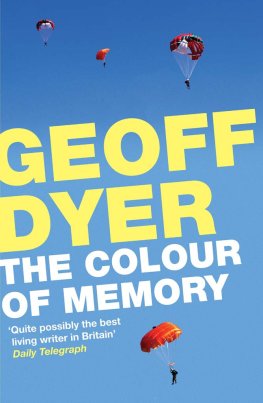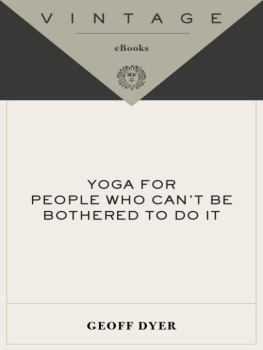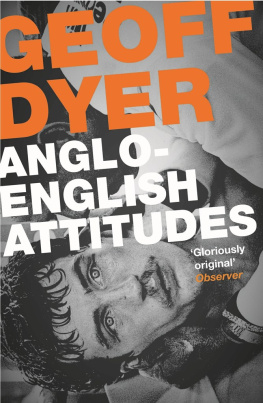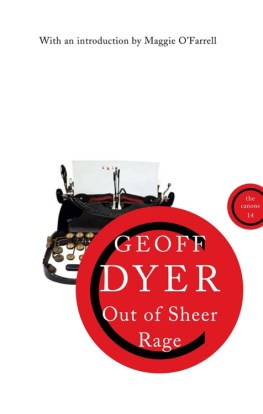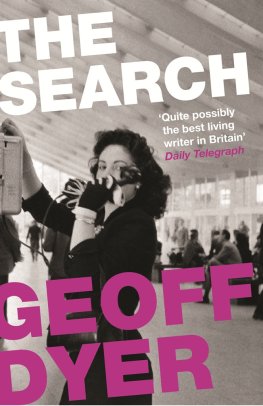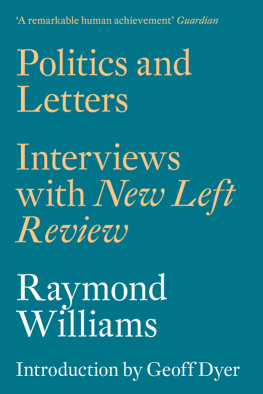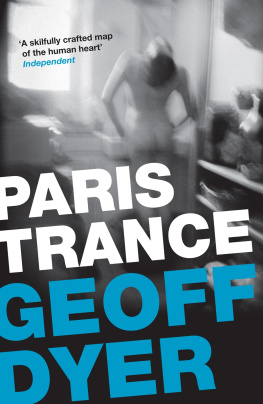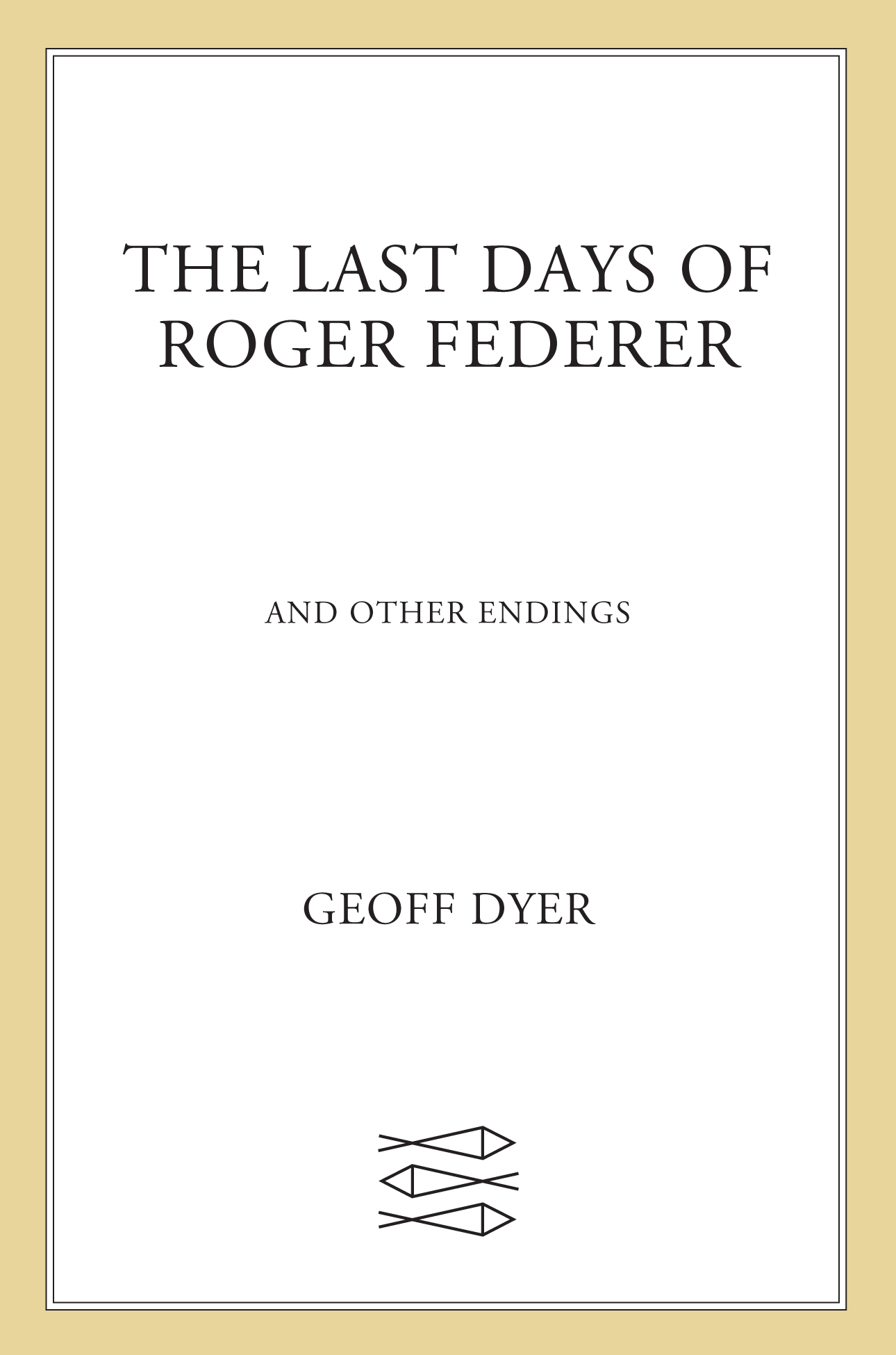Contents
Guide
Pagebreaks of the print version

The author and publisher have provided this e-book to you for your personal use only. You may not make this e-book publicly available in any way. Copyright infringement is against the law. If you believe the copy of this e-book you are reading infringes on the authors copyright, please notify the publisher at: us.macmillanusa.com/piracy.
For Rebecca
When she straightened up and stood with her hands on the rail, she saw that it was already dusk, or rather an afternoon twilight that would deepen imperceptibly into night.
ANITA BROOKNER
If it is so difficult to begin, imagine what it will be to end
Louise Glck
The End is the last track on the Doors first album, released in January 1967, having been recorded the previous August, when the band had been together for just over a year. It grew out of multiple live performances at the Whisky a Go-Go in Hollywood, though no recordings of these evolving versions of the song have survived. From the get-go at the Go-Go, then, Jim Morrison was busy obsessing about the endand not just in The End. When the Musics Over ends with repeated assurances that music is your only friend until the End. Its a safe bet, contemplating or proclaiming the end like this; eventually you will be proved right.
The End was the last song the quartet performed live, at the Warehouse in New Orleans, on 12 December 1970. In March the following year the twenty-seven-year-old Morrison moved to Paris, where he was found dead, in the bathtub of his apartment, on July 3.
In a version of Tangled Up in Blue the unnamed lover tells Bob Dylan (or whoever the narrator of the song is supposed to be): This aint the end, / Well meet again someday on the avenue
Shes right, its nowhere near the end when she says this. Its the second verse of the long opening track of Blood on the Tracks. Dylan continued to tinker with the song in numerous ways after a test pressing of the album had been made, prepared for release, and, at the last minute, rejected in favour of a more rhythmically insistent version of Tangled Up in Blue, rerecorded with different musicians, in Minneapolis. (The changes were made so late in the day that the record went on sale with the old sleeve, crediting only the original musicians.) Hes since performed it live, sometimes with major overhauls to words and music, on more than sixteen hundred occasions.
On the wall of the barbershop where I have my hair cut on Main Street in Venice Beachwhere the Doors started outis a mural of Jim Morrison with his bare shoulders and luxuriant black hair that always looked like it never needed cutting. Recently another similar mural appeared, right on my street. All over Venice, in fact, there are traces of the Lizard King, tributes to the rock-god Dionysus. On the boardwalk at least one busker is always playing Break on Through or one of the Doors other big hits.
I was dilly-dallying, unsure how to start this book about how things end, on Thursday 10 January 2019, when, at the press conference ahead of his first-round match at the Australian Open, Andy Murray announced what amounted to his retirement. More than moving, it was devastating to watch. The first, fairly innocuous question proved too much for him. Unable to answer, he left the stage for several minutes to compose himself. It was the end, he said when he came back out. He hoped to bow out at Wimbledon in July but was not sure he would make it even that far. When another journalist asked if this meant the Australian Open might be his last tournament, Murray said that was quite likely. Which meant that his match on Mondaymy Sunday in Los Angelesagainst Roberto Bautista Agut might be his last. Murray sat there describing how the pain, not just of playing top-level tennis but of pulling on his socks and putting on his shoes at home, was too much. As often happens in these press conferences his common-sense answers made the questions a little superfluous. Had he seen a sports psychologist? Yes, but that didnt help because the pain was still there. If it had made the pain go away then hed be feeling great. The whole thing made for harrowing and, of course, absolutely absorbing viewing. It was the end, Murray said, partly because there was no end in sightto the training, the rehab, the pain; no sign when he might begin to get back to his best. A line from The End floated through my head as I watched this gladiatorial athlete lost in a Roman wilderness of pain.
One of the questions that had got me interested in this subjectthings coming to an end, artists last works, time running outwas the long-running one of Roger Federers eventual retirement. The imminent departure of the first of the big four male players brought an unexpected if indirect urgency into play. With a rival six years his junior on the way out Rogers time seemed also to be shrinking around him.
Writers often have an end in sight for completing a book. For some this can take the form of a proposal that leads to a contract in which a deadline for delivery of the manuscript is agreed upon in advance; Im not one of them but Murrays going out of the Australian Open, as expected, in a blaze of beaten glory to Bautista Agut after five typically gruelling sets (the first two of which he had lost) concentrated the mind. It seemed important that a book underwritten by my own experience of the changes wrought by ageing should be completed before Rogers retirement, in the long twilight of his career. Even with no idea of where, when, or how things might end up it was time to start workon a book that ended up being written while life as we know it came to an end.
In 1972, during a Duke of Edinburghs Award Expedition (Bronze), we were camping somewhere in Gloucestershire, about eight of us from grammar school, when the news came over the radio. George Best had quit football. He would have been twenty-six; I was fourteen. We had not started drinking thenjust being out in the countryside rather than at home with our parents was enough to make our camping trip thrilling, but it was the news about Best that made it memorable. He actually returned after quitting, and it was not until 1 January 1974 that he played his last match for Manchester United before the long and wandering years of boozy decline. This was not the first time I had heard of someones career coming to an end but it was the first time I knew of anyone stopping doing something they loved, the thing that gave their life meaning. It was also the first time I heard of a retirement that was not, of someone quitting and then resuming the thing they had retired from. In Bests case it established a pattern for giving up booze and then giving up on trying to quit drinking.
Retirement in the world I grew up inthe world of poorly paid, often unpleasant and unrewarding workwas something my relatives began to look forward to from a surprisingly early age. It was a form of promotion, practically an ambition. In the world Ive become part of, retirement is almost unheard of or at least seldom admitted to. If you have retiredare no longer able to write or are finding it impossible to publish what you have writtenyou keep it to yourself; you keep the manuscript to yourself because nobody wants it. And in any case, if part of the job is sitting in a chair at home with your feet up, reading, then the difference between work and retirement is imperceptible, even if you start readingthough its something I advise against, whatever the weatherwith a blanket over your knees.


